Builders have consistently utilized brick masonry because this material provides strength along with durability and attractive visuals. One essential component of brick masonry involves selecting an arranged pattern for the bricks. The stretcher bond stands among multiple bond options as a common selection because of its simple yet practical structure. The article will review properties of stretcher bond in brick masonry and its applications together with construction approaches while considering benefits and tradeoffs.
What is a Stretcher Bond?
In stretcher bond brickwork patterns the brick wall displays only the narrow rectangular stretchers of each brick because they face the surface. A running bond layout alongside its other name combines with each brick in the second position that overlaps the middle point of the brick below it producing a staggered visual effect. The straightforward brick layout generates an organized look which finds its applications particularly in non-bearing structures or decorative panels and aesthetic exterior designs.
Applications of Stretcher Bond in Brick Masonry
A wide range of construction projects make use of the stretcher bond. The stretcher bond finds its applications in the following ways:
Exposed Walls in Steel and Concrete Structures
Stretcher bonds find their main use in steel and reinforced concrete structures for exposing walls because they deliver primarily decorative value. Any non-bearing wall benefits from stretcher bond because of its unique stretch pattern which creates a refined appearance.
Boundary and Garden Walls
The stretcher bond delivers its best performance in boundary wall and garden wall construction since these structures require minimal support weight. Using this design produces an efficient and attractive solution particularly suitable for such structures.
Partition Walls
Stretcher bond finds applications in interior partition walls that do not carry exterior loads. The stretcher bond works well for lightweight construction because partition walls are made half as thick as standard brick thickness.
Straight Walls
Stretcher bond suits long straight walls since its linear pattern continues from edge to edge. Stretcher bond provides smooth uninterrupted surfaces which make it useful for external and internal building construction.
Decorative Brickwork
The stretcher bond design provides an orderly appearance which people use frequently when decorating building fronts and outdoor walls. The basic design format enhances both site structural appearance and exterior visual attraction when used on buildings and outside areas.
Properties of a Stretcher Bond
Knowledge of stretcher bond properties leads to understanding its application advantages along with its fitness for specific uses.
Visible Narrow Face
Brick make only reveals its long narrow faces in a stretcher bond pattern that creates a basic smooth format for the wall structure. The single narrow brick exposure creates an uncluttered appearance which works best for delicate decorative walls along with load-free wall structures.
Wall Thickness
The stretcher bond produces thinner exterior walls than other bond types do. The average stretcher bond wall stands at 4.5 inches tall (even without external plaster on its surface). The method proves suitable for building thin structures such as partition dividers and exterior walls which need restricted space.
Overlapping Arrangement
Each second-row brick adopts an overlapping placement where it stretches to the center of the brick underneath it. The wall obtains structural strength and resistance from this offset brick placement even when maintaining an overall slim thickness.
Strength and Stability
Although stretcher bonds deliver stability they remain inferior to Flemish and English bonds because bricks within the pattern do not lock together. This type of bond works well in lightweight situations where you need decoration features but that is all.
The Procedure to Build Stretcher Bond Walls
The construction of stretcher bond walls follows an easy methodological approach. Here’s a step-by-step guide:
1. Prepare the Mortar
Begin the process by mixing mortar using cement together with sand and water as ingredients. Apply mortar that reaches an ideal consistency to maintain brick position while preventing mortar from splintering. After achieving the correct texture mix all components once more.
2. Lay the First Row of Bricks
The primary foundation for this wall consists of setting the first brick layer by pointing the narrow long brick faces to the exterior. Check the mortar-covered surface for proper alignment during the consistency inspection.
3. Stagger the Bricks
When setting the second row bricks position each one above the center point of the bricks from the first row. The staggered brick arrangement happens because of this particular placement method during stretcher bond creation.
4. Continue Building
Repetition of this procedure through every row will result in achieving your required wall height. Maintain alignment and levelness between each brick when constructing the wall.
5. Finish the Joints
A trowel can be used to smooth the mortar joints after the wall construction until a clean finished result is achieved.
6. Allow the Mortar to Cure
The mortar needs time to cure as the final step of the process. A properly cured wall becomes resistant to change and maintains its long-term durability.
Advantages of Stretcher Bond
Constructors choose stretcher bonds frequently because it delivers several useful advantages.
Ease of Construction
Construction of stretcher bonds remains easy for novice masons to handle without any difficulties. The straightforward pattern of construction demands no exceptional abilities which enables builders to finish their work speedily.
Minimal Material Waste
No brick cutting occurs during construction thus minimizing the waste produced during the process. Stretcher bond serves as an efficient construction method because it decreases project expenses.
Aesthetic Appeal
The structured linear design of stretcher bond creates visual attractiveness which improves building appearance. The pattern produces an even surface which works effectively for practical and decorative purposes.
Cost-Effective
Construction costs decrease when using stretcher bonds since they require fewer items and less work from laborers compared to additional difficult bricklaying patterns. Builders often select stretcher bonds because they offer an affordable solution for construction work.
Versatility
The stretcher bond offers flexibility by functioning with steel and concrete structures to support construction sites that include boundary walls through decorative facades.
Disadvantages of Stretcher Bond
Several disadvantages exist with stretcher bond despite its multiple beneficial features:
Limited Load-Bearing Capacity
Because bricks in stretcher bonds do not interlock with one another this method is incompatible for use in retaining load-bearing walls. Stretcher bond maintains its use for non-loading bearing construction types.
Less Structural Stability
The extended surface of stretcher bond walls remains thinner because it lacks the stability that thicker and properly interlocked bonds offer. More support in the form of columns or additional reinforcements becomes necessary to stabilize taller walls constructed with stretcher bonding patterns.
Not Ideal for Curved Walls
Straight walls work best with stretcher bond as a building technique. Clay brick walls with curved or rounded shapes should avoid stretcher bond techniques due to their failure to adapt to such profiles.
Conclusion
Construction professionals commonly use stretcher bonds in building projects since they provide simple yet attractive designs at affordable costs. This pattern has excellent performance in building non-load-bearing walls and partition walls as well as boundary walls and decorative applications. This pattern shows weak strength along with instability since it needs supplemental reinforcement to make load-bearing walls and support structures beyond one story.
Building projects that need brick masonry construction should use the stretcher bond pattern to develop an attractive visual design mixed with excellent functionality. The respected construction firm Walls & Dreams supplies professional masonry services which protect your project from substandard work and establish it as one that meets superior construction standards.








